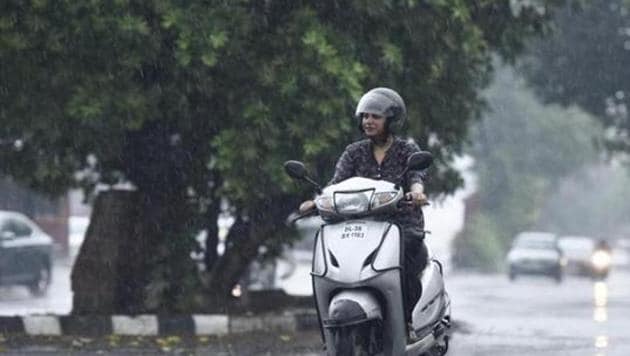Gone in 9 days? Monsoon retreating 5 times faster
IMD announced monsoon withdrawal on October 9, with the establishment of an anti-cyclonic circulation in the lower tropospheric level over northwest India, and a gradual reduction in moisture and rainfall.
The behaviour of this year’s monsoon is getting curiouser and curiouser — after beginning to withdraw only on October 9, well after the usual date of September 1, the latest withdrawal since at least 1961, it has, in the span of five days, retreated from most parts of the country and, in the next few days, will be gone completely, according to the India Meteorological Department (IMD).

In other words, it will take a week to do what it usually does over 45 days.
But that is perhaps only to be expected of what has been a very peculiar monsoon characterised by a delayed onset, an extremely dry June, a near deluge in several states in August and September, and, of course, a delayed withdrawal.
This year, IMD announced monsoon withdrawal on October 9, with the establishment of an anti-cyclonic circulation in the lower tropospheric level over northwest India, and a gradual reduction in moisture and rainfall. But what is typically a gradual process was almost over in five days.
On Monday, IMD’s bulletin stated: “The southwest monsoon has further withdrawn from the remaining parts of the north Arabian Sea, some parts of the Central Arabian Sea, remaining parts of Gujarat and Madhya Pradesh, some parts of Konkan, Madhya Maharashtra, Marathwada and Vidarbha, some parts of south India, some more parts of Chhattisgarh, some parts of Odisha, entire Jharkhand, Bihar and Sub-Himalayan West Bengal and Sikkim, some more parts of Gangetic West Bengal , entire northeast India and some parts of north Bay of Bengal.”
The pace of withdrawal stands out. For instance, in 2016 rainfall activity over the northwestern parts of Rajasthan remained subdued since September 5, marking the beginning of the process. A change over in the lower tropospheric circulation pattern over the region from cyclonic to anti cyclonic was established on September 15. Further withdrawal of monsoon from more parts of northwest India took place on October 5 with the southward shift of the subtropical westerly jet stream.
“This year monsoon withdrawal is unusually quick. It normally takes 45 days. This year between October 9 and 14, monsoon has already withdrawn from most parts of northwest India, central India, Chhattisgarh, Bihar, Konkan, Goa etc. Wind patterns changed very quickly to northwesterly from easterly due to formation of an anti-cyclone over western parts of Rajasthan,” said Mahesh Palawat, vice president, climate change and meteorology, Skymet Weather.
IMD scientists admit the pace of withdrawal has been unusual. “The criteria for monsoon were not applicable anymore to these regions in northwest India and central India so we have announced that monsoon has withdrawn from these places. We had earlier said withdrawal will be quick. It is likely to withdraw completely by October 17. This is climate variability,” said M Mohapatra, director general, IMD.
“Monsoon flow of air has stopped and with that all monsoon activity has also stopped abruptly. It is indeed quick,” added Pulak Guhathakurta, head, Climate Application and User Interface, Climate Research and Services at IMD, Pune.
Monsoon rainfall during July, August and September were 105%, 115% and 152% of its Long Period Average (LPA) respectively, according to IMD data.
Experts say it is too early to relate the quick withdrawal to climate change. “The main synoptic feature of this year’s monsoon is the widespread rain in September which is very unusual. Lots of low pressure systems formed over the Bay of Bengal. I also think western disturbances which start forming in winter formed early in September this year, blending with monsoon rains. Climate change cannot be ruled out but it cannot be linked definitely (with the withdrawal) . Some people have contended that IMD should have declared the onset of withdrawal earlier,” said SK Dash, climate scientist, IIT Delhi.
Whatever the reason, many parts of India will be very happy to see the back of what has been a strange and cruel season.
Get Current Updates on India News, Lok Sabha Election 2024 live, Elections 2024, Election 2024 Date along with Latest News and Top Headlines from India and around the world.



